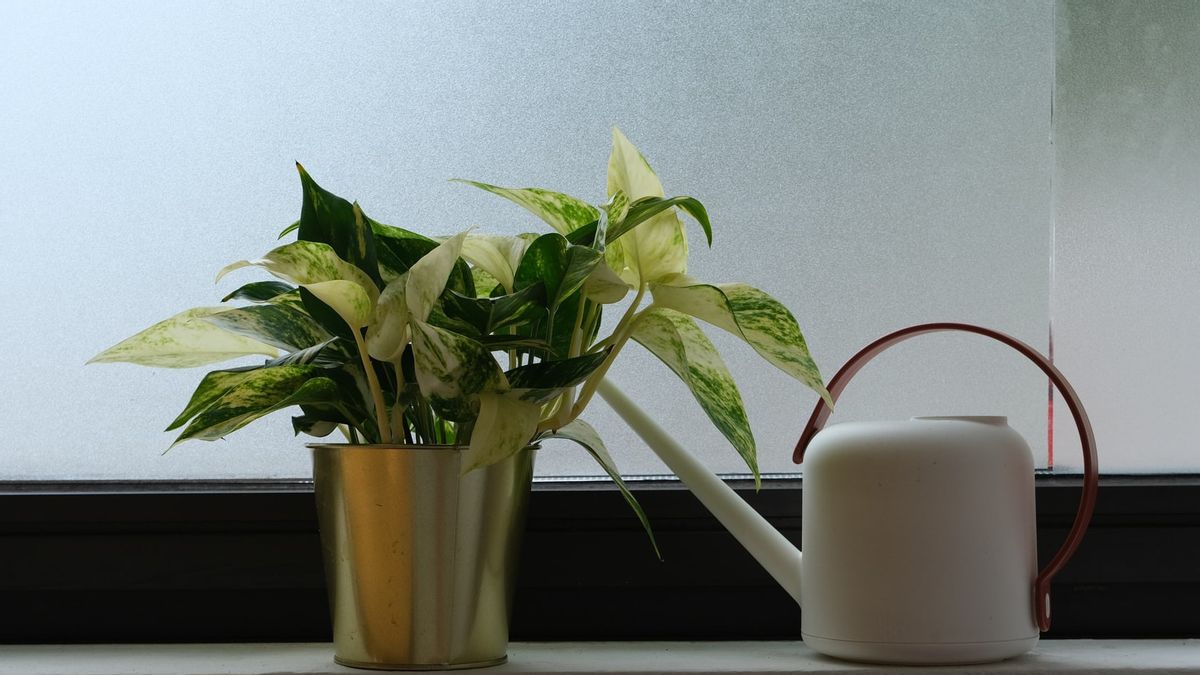YOGYAKARTA – Watering plants, it turns out that there is a technique to be effective and not waste water. For those of you who have a hobby of gardening and caring for plants, do you know the trick?
Growing plants is not only beneficial for mental health. If you care for or cultivate edible plants that can be consumed, the advantages will increase. But you also need to consider the amount of water to water it regularly. To keep saving, you can follow the following tricks and methods below.
1. Consider watering timeResearch reported by The Micro Gardener, Wednesday, March 30, shows that watering time has a significant effect on plant growth. Plants in pots with materials that dry quickly, such as pine bark, so that if accumulated, water is more wasteful.
The study above also found that plants watered after 12.00 and in the afternoon, can be more fertile than those watered in the morning. So, water the plants in the afternoon so that the plants are more lush, healthy, and strong.
As for plants in the garden or without pots, it is advisable to water the soil in the morning. Not sprinkled on the leaves. This is a way to store water in the soil for the heat of the day.
2. Install the tank for the rainwater containerWater from the rain should not be left to waste and flow without being used. Use a slim tank if the garden area at home is limited. Can also use a permanent water system for rainwater containers.

If you often cook dishes by steaming or boiling, instead of throwing the water in the sink, it's better to wait for it to cool and the water may water the plants. Once cooled, the remaining boiled water is high in nutrients. That way you also provide fertilizer to the plants.
4. Use compostCompost is often used by gardeners. They use this type of natural fertilizer to retain soil moisture and help retain nutrients in the soil. You can add the fertilizer to save water.
5. Choose a pot that can keep the soil moist longerPotting material also affects the moisture resistance of the soil for your plant's growing medium. Materials that heat quickly, such as metal pots, make it a last resort. Meanwhile, terracotta or unglazed clay pots will lose moisture faster than glass-lined pots. This means that it is important to use a quality potting mix to retain moisture.
6. Layer mulch as a top protective layerOn a hot day, 70 percent of groundwater evaporates if it is not covered with mulch as a top protection. Mulch is one of the best moisture-holding materials. This material prevents evaporation of water from the soil surface. So it is advisable to use coarse mulch. Coarse mulch allows water or rain to run off onto the soil.
7. Increase organic matterThe benefits of organic materials often go unnoticed. These materials absorb water and store more humus. Clay with a mixture of organic matter will receive water more quickly. Meanwhile, organically modified sandy soil can hold water longer and therefore does not need frequent watering.
Adding organic matter or compost, has tremendous potential to retain moisture, nutrients, and build soil health. You can also add worm castings, vegetable scraps, mulch, pea straw, grass clippings, and leaves to keep the growing medium moist for longer and save water for watering.
In addition to the seven tips above that you can practice in conserving water, you can choose plants with smaller leaves. Smaller leaf plants also save on watering. Even certain plants such as ivory betel, potos, and succulents and cacti do not need frequent watering.
The English, Chinese, Japanese, Arabic, and French versions are automatically generated by the AI. So there may still be inaccuracies in translating, please always see Indonesian as our main language. (system supported by DigitalSiber.id)













